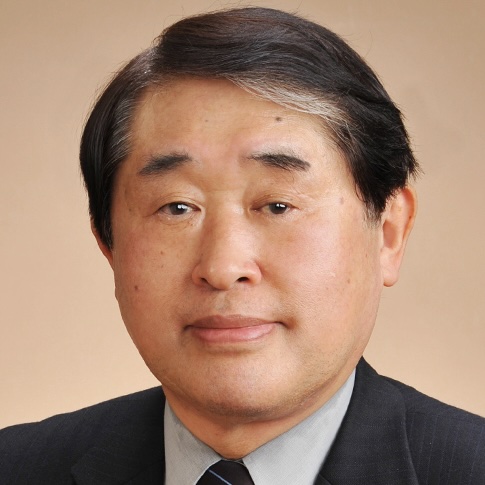DPRU Q&As: Takeshi Kaneko, Lawyer, Japan: Part Two
Posted
Time to read
 In this instalment of the DPRU's Q&A series with death penalty litigators, DPRU Project Manager Daniel Cullen speaks to Takeshi Kaneko, a Japanese lawyer, about Japan’s death penalty laws, conditions for prisoners on death row, public discourse on the death penalty in Japan, barriers to abolition, and the recent acquittal of the world’s longest-serving death row inmate.
In this instalment of the DPRU's Q&A series with death penalty litigators, DPRU Project Manager Daniel Cullen speaks to Takeshi Kaneko, a Japanese lawyer, about Japan’s death penalty laws, conditions for prisoners on death row, public discourse on the death penalty in Japan, barriers to abolition, and the recent acquittal of the world’s longest-serving death row inmate.
Are there any notable patterns among capital cases in Japan?
In law, there are a total of 18 crimes punishable by death in Japan, but in practice, death sentences have been imposed only in cases of murder and manslaughter by robbery.
The background of the accused is generally one of discrimination and poverty. Although the crime cannot be justified, the life of the accused from birth to the commission of the crime reveals a tragic experience that cannot be helped. If this is not changed, there will be no real reform.
What are the living conditions of death row inmates in Japanese prisons?
Once a death sentence is confirmed, a condemned prisoner’s freedom is severely restricted. They are held in solitary confinement and are required to eat, exercise and bathe alone (isolated from other prisoners). In solitary confinement, prisoners are under 24-hour surveillance. They are only allowed to meet or write to a limited number of people. Conversation between prisoners on death row is also prohibited.
As of 9 September 2024, there were 107 people on death row; no executions have taken place for two years, since July 2022. According to recent statistics, the time between the final verdict to the actual execution can vary, ranging from 1 year and 4 months to 18 years and 6 months, with an average time on death row of 6 years and 8 months.
To what extent is the death penalty an issue which is discussed in public discourse and political debates in Japan?
The death penalty is rarely discussed. This is because the Ministry of Justice, which has jurisdiction over the death penalty, refuses to discuss it. The Ministry does not publish any data on the actual status of the death penalty.
A non-partisan parliamentary group of MPs has been formed to consider the future of the death penalty in Japan, but it is not very active.
In addition, at the invitation of the Japan Federation of Bar Associations, a panel of experts was established in February 2024 to discuss and study Japan's death penalty system, and has so far held 12 rounds of discussions and research. Its conclusions will be compiled in a report in November 2024.
Despite these developments, the Ministry of Justice opposes abolition on the grounds that public opinion polls show that over 80% of the public support the death penalty. This figure is taken from a national survey by the Cabinet Office, which also covers many other areas, and the questions are abstract and binary: 'Do you oppose the death penalty? ' and 'Is the death penalty inevitable?’ (not exactly ‘Are you in favour of the death penalty?’), with 80% of participants responding: ‘it is inevitable’.
The general public has no information on the death penalty and many are unaware that capital punishment in Japan takes the form of hanging. The concealment of information, combined with opposition to the abolition of the death penalty, prevents a lively debate.
The case of former death row inmate Iwao Hakamada has attracted international media attention following his recent acquittal. What have the implications of this case been in Japan?
The Hakamada case was one in which, as a result of a request for retrial, Mr Hakamada was acquitted at the age of 88. He was falsely convicted in a death penalty case. However, there are few legal provisions for the retrial process, leaving it to the discretion of the court that receives the retrial request. In addition, the prosecutor can challenge the court’s decision to retry a case, which has led to unusually lengthy proceedings.
In the case of Mr Hakamada, the retrial proceedings took more than 40 years. After the retrial was finalised, the criminal trial for a retrial was initiated and it took one year to reach a verdict of acquittal. Following the acquittal, there have been calls for the specific provisions to be introduced covering the retrial process, and for the period it takes to retry a case to be reduced.
However, what I want to emphasise most is that even if a request for retrial is made, the request itself does not stop or suspend the execution of the death penalty. And in reality, there are cases where the death penalty is carried out even where there is a suspicion of false conviction. For example, in the ‘Iizuka case’, the death penalty was carried out in October 2008 while the defendant was awaiting retrial, even though he was suspected of being falsely convicted. The execution took place only two years after the death sentence was finalised in September 2006. If an innocent person is executed, their life is irrevocable.
Mr Hakamada is the fifth person to be released from death row in Japan. In other words, in addition to Mr Hakamada, there have been four other cases in which defendants who were sentenced to death have been acquitted and returned to society. Despite the fact that this is a serious issue in itself, it is not the subject of much discussion in Japan.
Mr Hakamada was subjected to the fear of execution for so long that he became mentally ill. Even after his acquittal, his mental state has not returned to what it was before. Questions remain as to how death row inmates are currently being treated and whether this is the right thing to do.
Why do you think that the death penalty is carried out in such a secretive manner in Japan?
This is because the Japanese method of execution - hanging - is a cruel method of execution and cannot be made public. In states with the death penalty in the US, executions are public. They are open to the family of the condemned person, the families of the victims, judges, prosecutors, the media and representatives of the public.
In Japan, however, only those involved in executions, such as prosecutors or detention centre directors, are allowed to be present. Family members of the condemned and victims are not allowed to be present, nor are any representatives of the media or citizens.
What do you think are the main barriers to the abolition of the death penalty in Japan?
The Ministry of Justice does not provide information on executions. It does not reveal to parliamentarians or the Bar Association where the execution sites are located in the detention centres or what the execution sites look like.
The State claims that polls show that 80% of the population support the death penalty, but public opinion polls are meaningless in a situation where information is hidden.
The government is unwilling to address this issue publicly. The government wants to leave the issue unaddressed, which is why there is no disclosure and it just wants to maintain the status quo. But in our view, that is against justice. So we want to clarify the issue to the public, have a public debate and then decide whether the death penalty should be maintained or abolished.
Our aim is also to make the world widely aware of the current situation in Japan through litigation. I am very ashamed of the current situation in Japan and I want it to be communicated more widely to the world.
This is the second part of a two-part interview with Takeshi. The first part is available here, covering his legal practice, his efforts to reform Japan’s death penalty system through litigation, the difficulties of pursuing these legal reforms, and his personal motivations for working on death penalty cases.
-----------------------------
Takeshi Kaneko is a lawyer based in Japan, whose work has included litigation to reform Japan’s death penalty system. He has held the positions of Chairman of the Human Rights Protection Committee of the Japan Federation of Bar Associations, Chairman of the Osaka Bar Association, and Vice-President of the Japan Federation of Bar Associations.
Share
